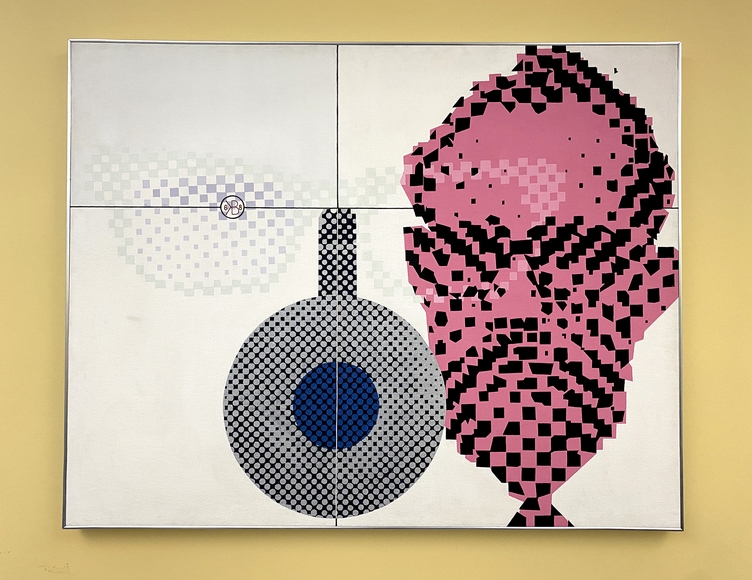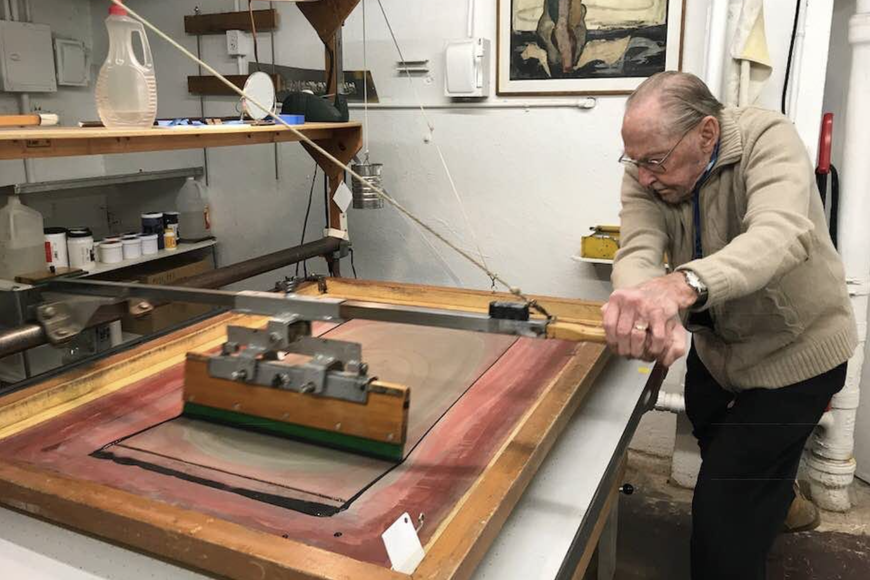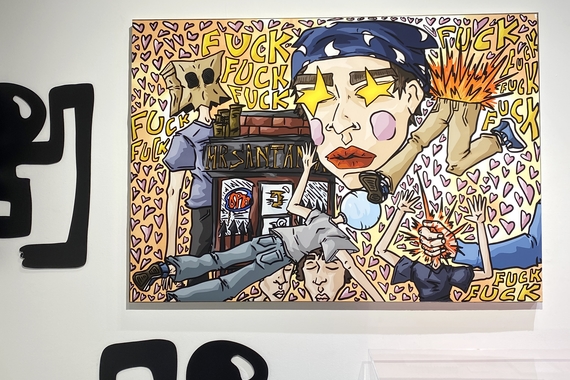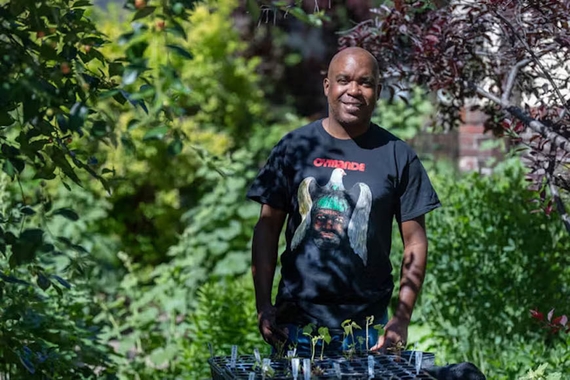In Memoriam: Karl Bethke (1932 – 2024)
The Department of Art is saddened by the news of the passing of Professor Emeritus Karl E. Bethke, who died on May 19, 2024, at the age of 92. Karl’s impact on this department and this university spans six decades and continues today, through his many students and colleagues, many of whom have written in with their own remembrances here.
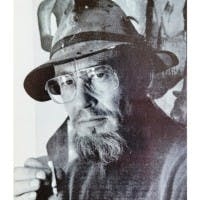
Born in 1932 in Kaltennordheim, Germany, Karl Bethke was raised in Sweden before relocating to Nazi Germany in 1943, where he was orphaned at the age of 11. After the war, he spent the rest of his teenage years being trained as a machine-builder in East Germany. After being involved in a labor strike, he escaped to West Germany in 1953 and immigrated to Minnesota three years later under the Refugee Relief Act. He joined the XIV Corps Army Reserve in 1957 as a non-citizen servicemember, eventually being honorably discharged at the rank of Staff Sergeant in 1964.
Karl married Rosemarie "Ushi" von Natzmer in 1958 and attended college at the University of Minnesota, where he earned a BA Summa Cum Laude in 1962 and an MFA with a Tozer Foundation Graduate Scholarship in 1965. The next year he joined the Department of Art faculty teaching drawing and printmaking, and here he would stay, helping shape the department’s pedagogy and facilities for many years — including as Chair from 1973 – 1977 — until his retirement in 2004, after which he continued to teach as an adjunct and maintain an active printmaking practice.
Karl enjoyed the mechanical processes of printmaking — he was an expert at screen printing, intaglio, collagraph, and other methods — and in the October 1987 issue of Twin Cities Magazine, he explained that he had once worked in ceramics, where there was “nothing between you and the material. Prints are on the other end — there’s so much rigamarole involved. It gives you time to digest your next move while you’re doing all this technical business.”
He felt this way even fresh out of grad school, writing in 1966:
“While some people might find all the technical inbetweens of printmaking stifling and distracting, I see in them life and stimulation, a sustained challenge of my intentions which keeps the idea under stress until the last proof is pulled. It is this element of active interaction between the idea and its carrier over time which matures the idea and gives the finality to the statement so characteristic of a print.
“For these reasons, and not for its reproductive properties, do I consider printmaking my major concern and believe that it will be recognized increasingly as a fully emancipated art form.”
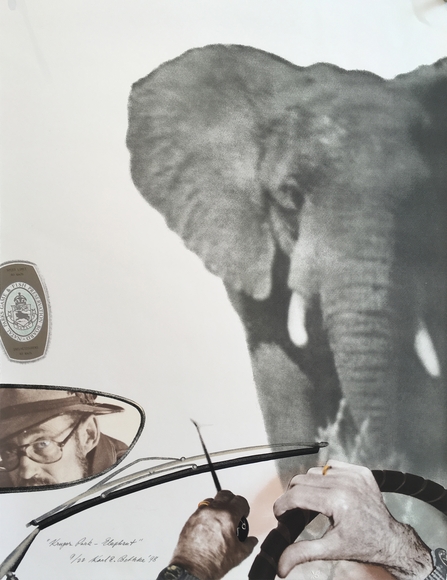
In 1978, Karl took a sabbatical trip to Rorke’s Drift in South Africa that would forever after affect his artistic output, inspiring no fewer than 91 prints by the time of his retrospective retirement exhibition in 2005 at the Katherine E. Nash Gallery. During the sabbatical year, Karl worked with Rorke’s Drift Art School, under the umbrella of the Evangelical Lutheran Church of Sweden’s Arts and Crafts Center, providing “the atmosphere for the development of an indigenous artistic idiom which reflected the individual experience of the black African living in South Africa,” which was under strict apartheid at the time. He wrote that what held his attention about this one year for so many subsequent ones was manifold: Rorke’s Drift had an intriguing geography, a deep history of indigenous art, a legacy of colonial destruction, and strict social stratification under apartheid. “Working on material improvements with unreal aspirations sensing the eventual futility of such efforts is a realization I owe to Rorke’s Drift and which still fuels my work,” he wrote. “Rorke’s Drift, then, has become a symbol for quests never met, questions never answered.”
In the accompanying exhibition statement for the 2005 show, Lyndel King (then Director and Chief Curator at the Weisman Art Museum) wrote that Karl “cites incongruity and conflict as the most prevalent forces in his life, and in his art. It is the responsibility of the artist, he said to students during his long career teaching art at the University of Minnesota (1965 to present), to ‘communicate ideas which significantly address aspects of the human condition in the most universal sense of the term.’”
Karl Bethke’s obituary, which includes several other remembrances in the comments, is available via Star Tribune https://www.startribune.com/obituaries/detail/0000489439/?fullname=karl-e-bethke
Special thanks to Katelyn Morken and the University of Minnesota Archives for their invaluable research assistance.
Below are remembrances submitted by Karl’s former students and colleagues. If you would like to submit a remembrance for inclusion, please email Communications Specialist Russ White at whit3418@umn.edu

Remembrances
Department of Art Chair Professor Christine Baeumler
By all measures, Karl Bethke lived an extraordinarily storied life. As I read Karl’s biography, it’s hard for me to imagine the difficult and complicated historical periods that shaped his life and art. As a (then) young colleague in the Department of Art, I recall at first being intimidated by Karl’s stern and serious demeanor. I learned quickly, however, that Karl harbored a generous and kind spirit — accompanied by a wry sense of humor. Occasionally I stopped by Karl’s studio in South Stores. He was always the consummate host — and always offering a cup of coffee and whatever he might have to share that day. We would look at prints up on the wall and Karl shared the stories behind the images. Karl’s sustained focus on his year at the Rorke’s Drift Art and Craft Centre in apartheid South Africia in 1978 signified to me Karl’s determination to explore unsettling histories — and it was clear he valued the relationships of the artists he encountered there. I valued Karl’s directness, honesty, and his incredible tenacity to make his work.
I remember that one day I encountered Karl at the entryway to the South Stores Studios. I couldn’t help but comment on fresh stitches that lined his neck. I asked him when he had surgery. “This morning! I had to get back to the studio this afternoon!” That incident always stuck with me as an example of his passion as well as his toughness and determination that nothing would get in the way of making his art. Karl will be greatly missed as a colleague, teacher, and artist. Clearly, Karl’s legacy lives on in the students and colleagues whom he taught, mentored, and inspired.
Brian Sago (BA '96, Art & American Indian Studies, M.Ed '98 Art Education)
I met Karl Bethke thirty years ago, when I joined his intaglio class. I liked his gruff and practical approach to making art, so I took six more classes with him. His color theory class was transformative.
Sixteen years ago I became his studio assistant and, since then, worked with him once a week. I have no idea how many hours we worked together, but that time has come to an end.
There was a point when it seemed like half of the printmakers in the Twin Cities were former students. Most printmakers would remark, “Oh, Karl? Yeah, I took a class with him. Unforgettable.” He's a colossal part of why printmaking is so vibrant here.
As a young man, Karl had been trained in a machine shop in East Berlin. Later in life, he decided, based on what he learned there, that he could build most things better than he could buy them. With each custom-built tool I picked up to use, he had the same wry remark: “patent pending”.
His hand-crafted tools are now all over my studio and my classroom, and scattered to many others. The lessons he shared are being passed on to yet another generation of artists.
Professor Emeritus C. Morgan
There are people who leave an indelible mark on your memory. I arrived in Minnesota as a professor in the Department of Art (Studio Art) in 1992 and Karl Bethke, who was already a seasoned tenure professor, welcomed me with kindness and enthusiasm. Bethke’s strength as a teacher and artist came from his experience from time spent in Germany and Africa, giving him a global perspective long before it became popular. He was never boisterous but rather subtle in his artistic assertions. The old art building was a totally dysfunctional space for teaching and making art, but Karl was innovative and capable of jerry-rigging equipment to solve problems in the printmaking studio; perhaps to the chagrin of the administration. Hints of his German accent sparkled with credibility when he spoke. Bethke was a knowledgeable artist and his philosophical perspective certainly assisted my transition as a new member of the art faculty. Finally, what I remember most about Karl Bethke in his later years was his resilience and toughness — he was someone who never made excuses.
Joanne Price (MFA 2002)
Many students knew Karl as a strict Professor whose highest praise was “that’s not half bad.” He strove to make the printmaking process as clear and easy as possible for students' success. Remarkably and creatively economical in his approach to art processes, Karl also had an expert eye for composition, color and how to clarify concepts visually.
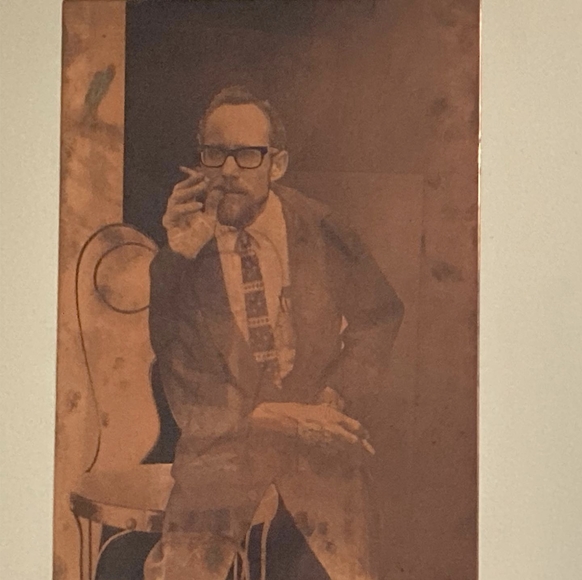
He had a streak of mischievousness that I loved - Like when he set a spark to a small bit of potassium chlorate - 💥🔥 to demonstrate its colorful chemistry magic - and of course, its volatility. I would be willing to bet that each person Karl was friends with has at least one story of his mischief worth sharing.
Beyond Karl’s prolific lifetime print production and instructional strengths, he had the richest life I feel privileged to have known. From his year-long experience in Rorke’s Drift, South Africa, he created an epic portfolio of work that spans over 40 years from 1979. Karl wouldn’t be Karl without his experiences - including those from South Africa, China, early U of M print department days with Malcolm Myers, escaping East Germany, and more.
I often shared contemporary print news from South Africa, including an excerpt about Karl’s time at the Rorke’s Drift Craft School from the book Rorke’s Drift: Empowering Prints by Phillips Hobbs and Elizabeth Rankin (2003). One of the students described the print process collagraph as “Karlsgraph.” Karl had introduced the process using recycled and common materials and it was so strongly associated with him and his time at the Craft School that the term stuck. He was both surprised and amused to my delight.
Karl’s passion for life was one of the strongest I’ve ever encountered. He battled cancers of all kinds and beat them while continuing to work in his studio through all but the last couple years of his life. To be invited to a meal at his studio or with him and Rosemarie at their home was always a treat and a privilege. Their home was full of things they loved, and Karl’s signature economy and expert eye for design was evident everywhere, from used copper plates for light switch covers and a stove exhaust hood.
I’m so thankful to have shared in his life and to help carry on some Karl-isms through teaching and printmaking - his knowledge, stories, and those memories are part of me and I cherish them.
Rosemary Kimball (MFA 2006)
I was one of Karl Bethke’s last graduate student assistants at the University of Minnesota Twin Cities in his final years of teaching printmaking, color theory, and art miscellaneous. Karl’s lessons were thoughtfully prepared and included many examples and thorough demonstrations. I fondly remember beginning our days at 7:30 a.m. in Karl’s office with a meeting and treat of fine cheeses on bread.
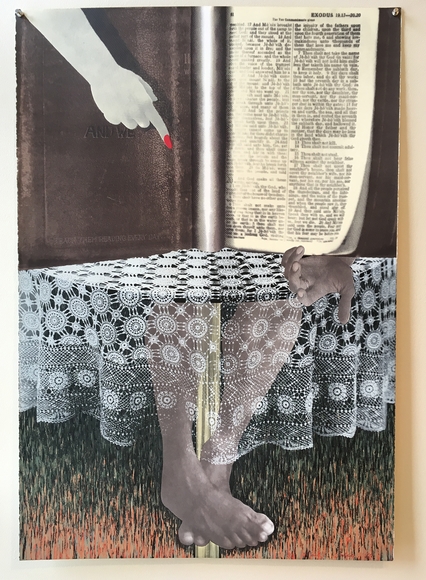
During the last four decades of Karl’s professional artmaking life, he screenprinted editions of nearly-perfectly registered images on paper, with impressive numbers of ink layers (some even had 100+ runs of ink). His body of work, the Rorke’s Drift Series, is a visual feast of images referencing his time in South Africa during which he set up a printmaking studio at an art school in the late 1970s. I was fortunate to be able to assist Karl in printing some of his artworks, hearing stories and learning his fastidious screenprinting techniques along the way.
Karl was a maker of many things including lamps, candles, boats, musical instruments, boxes, book ends, shelves, hand tools and mechanical gadgets from scratch, engineered with elegance and longevity in mind. He carved the gnarliest of wooden spoons. It always seemed to me as though Karl could make anything.
Karl did not waste materials. If something broke, he would fix it. Every tool and object had a dedicated place in Karl’s ordered spaces. I still think of him whenever I return a tool to its spot.
Karl appreciated things that were cute, such as cats, rodents, and tiny artworks. One time, Karl helped me rescue a baby bunny that was trapped behind the art building.
Karl was a generous friend until the end. After he retired from teaching, we kept in touch. I would call him with questions about chemicals and materials. Karl and his wife, Rosemarie, joined my CSA farm project and together we shared in the wonder of food and flowers while sitting in their beautiful backyard. Karl continued printmaking at his studio and he would host old friends and students for lunch. We would catch up and reminisce while eating tasty morsels, seated on stools around Karl’s rolling light table (handmade of course), enjoying our human condition. I am grateful for the memories of time spent with Karl and his family and friends. He will be missed.
Associate Professor Emerita Joyce Lyon
I remember Karl with respect and affection: respect for his uprightness and rigor, his technical knowledge, and his commitment, as teacher, artist, and human being. Affection is for the particular ingenuity, creativity, and spirit that animated him.
I knew him first as instructor, when I was in graduate school, who introduced me to the possibilities of intaglio and to his numerous inventions that facilitated the process in the Art Department print studio. When we became colleagues, I was allowed into a more private space where we might discuss his work and sometimes, rarely, his history. I discovered the range of his ironic humor and the depth of his bearing witness. There was also generosity and kindness, beneath a gruff surface. I remember being invited into the ritual of Christmas candle making and that he and Rosemarie shared meals at my table and at theirs.
His experiences in South Africa in 1978-79 provided the catalyst, the resource that fueled his creative and humanistic work for more than 40 years. The series Rorke’s Drift became the vehicle for integrating the elements he identified as central to his understanding of the world: conflict and incongruity, within an ordered system. With each print he reenacted the scenario of images and visual elements brought together and made to speak. The works are compelling and just, a worthy — and instructive — lifetime achievement.
Professor Emeritus Wayne Potratz
As many would know, Karl Bethke was a copious maker: not just of art, but of all sorts of studio inventions, interventions, and paraphernalia. My first indication of this phenomena was when I saw his installation in an early faculty show in the 1970s… a working coffee machine that took your money and delivered a cup of coffee! Later, when I was Chair of the department, I noticed all the ad hoc equipment Karl had designed and built in the print shop in the old Neagle Sign Co. building. However, his tour de force was the storage area he built in the empty space between the building and the adjacent Butler Building studios to the west. Most students and faculty didn’t even know it was there! Karl had cut a door through the passageway wall, constructed a storage room in the empty space, roofed and weatherproofed the space, and then painted the door so you wouldn’t notice unless you really paid attention to the south wall of the walkway/stairway and saw a small lock just seemingly hanging on the wall! It was so good that the University Grounds and Maintenance would repaint the area without investigating what was behind the door. I have no idea what was in there, as I didn’t have the key and I must admit I never asked. It rivaled the Ceramic faculty’s weekend modification of the damp room into their office with a ventilation system that was so professional looking that the University thought they had installed it and continued to maintain it! Most current faculty have absolutely no clue about how we designed and built so much of our own equipment and facilities in the '60s through the '90s. Recently I was saddened to see that Karl’s portrait was no longer hanging in the Regis Center for Art print shop… a space he helped design, nurtured, and loved. We never seem to honor those who brought us to where we are today. But for many, many students and printmakers all over the country, Karl’s contributions and his memory will not fade away.
Dr. Andrea Thoma (Visiting Scholar 1988-89)
I met Karl Bethke when I spent time at the Art Department of the University of Minnesota as a Visiting Scholar in 1988-89. Cindy Cribbs Conover, who had facilitated the post-degree exchange between the Ecole des Beaux Arts de Montpellier and the University of Minnesota, first introduced me to Karl. Like all the students who fondly remember Karl and what they learned from him about printmaking, colour, art, and life, I would like to join them in expressing my gratitude to someone who truly lived the reciprocity of learning and teaching.
Karl, Rosemarie, and I also share German as our mother tongue, which allowed for an additional layer of communication. In my inner ear I hear Karl saying in Berlin dialect: Haste jut jemacht! (Well done!) when he thought one of my paintings or drawings was resolved. I very much enjoyed, as so many, spending time in his studio with a cup of coffee and any of his homemade sandwiches he kindly shared, to look at his latest print in progress or a final version and discuss its visual syntax, composition and content. I learned a lot about visual process, criticality and focus from Karl, but equally about confidence as an artist and educator.
During my stay in Minnesota, Karl took me under his wing, and I was many times invited to their family home, enjoying good food and lovely conversations with him and Rosemarie, their family and friends. My late parents also became good friends with Karl and Rosemarie, and they kept writing to each other over many years.
I have lost a dear friend, we last spoke around his birthday, he was stoic as always and still had his humour which is good to remember. Rest in peace, Karl.
Technology Administration Technician Sonja Peterson (MFA 2009)
I took Printmaking and Color Theory from Karl Bethke. Karl was very specific and orderly in his processes. He had high expectations regarding his instructions while at the same time having a gentle heart hidden under his wonderful dry sense of humor. Through the years I was lucky to hear amazing stories from Karl's long life. The staff at the department enjoyed conversations, plant exchanges, and small group lunches in which we would each bring food to share and check in with each other. Karl created a community in these few special occasions. At one point during the pandemic, a small group of the technical staff went to have lunch outside in the parking lot at Karl's studio. It was amazing how just breaking bread together brings a lightness to the day. He is and will be so very missed.
